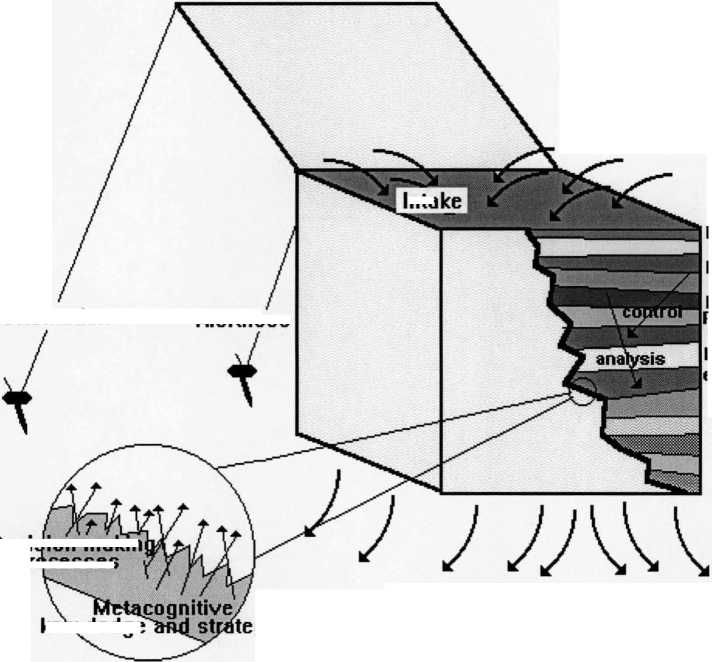appears to be very fluent and sometimes she appears to be struggling to form a complete
sentence. However, these variations do not occur haphazardly. All of them respond to
specific causes, although these can be different according to the learner and the interactional
context. Again, metacognitive knowledge and the awareness of it seem to play an important
role in this stage of the learning process. In Clemente (1996b), I studied the way self-
directed learners can take advantage of metacognitive knowledge and metacognitive
strategies to analyse their production and make decisions in relation to the most appropriate
psycholinguistic context for practising and monitoring their speech.
Linguistic input
Orientation

∩ta
knowledge
Noticing
Structuring
Renoticing
Restructuring
Practising
Renoticing
Restructuring
Practising
etc.
Linguistic goal
Fig. 4.3. The awareness box in self-directed language learning
Decisionmakin
processes
Alertness
As the reader can see, I am using the term awareness in its broadest sense, which
implies the three different meanings in which it has been used in SLA research (Schmidt,
1993). Thus, awareness in self-directed learning refers to: learning with intention (opposed
91
More intriguing information
1. American trade policy towards Sub Saharan Africa –- a meta analysis of AGOA2. Peer Reviewed, Open Access, Free
3. The name is absent
4. The name is absent
5. Proceedings of the Fourth International Workshop on Epigenetic Robotics
6. Gender and aquaculture: sharing the benefits equitably
7. The name is absent
8. The name is absent
9. The name is absent
10. Who is missing from higher education?